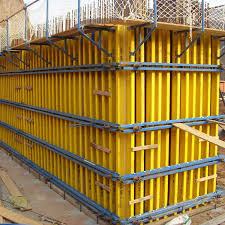Dec . 29, 2024 13:00 Back to list
climbing formwork for high-rise building
Climbing Formwork for High-Rise Buildings An Overview
In the modern construction landscape, the demand for high-rise buildings has surged significantly. These towering structures serve as commercial spaces, residential areas, and mixed-use developments, redefining urban skylines. A critical aspect of constructing such edifices is the formwork system employed, and one of the most efficient systems available today is climbing formwork.
What is Climbing Formwork?
Climbing formwork is a specialized technique used in the construction of high-rise concrete structures. Unlike traditional formwork, which is typically fixed in place and then dismantled once the concrete has set, climbing formwork is designed to ascend with the building as construction progresses. This system is particularly advantageous for constructing vertical elements such as shear walls and core structures.
Efficiency and Safety
One of the primary advantages of climbing formwork is its efficiency. The ability to climb allows for continuous construction without the need for extensive reassembly and alignment. As workers pour concrete in one section, the formwork can simultaneously be moved up to the next level. This leads to a significant reduction in the overall construction timeline—a crucial factor in high-rise projects where time is money.
Additionally, climbing formwork enhances safety on-site. Since the system operates within the building’s structure, workers are protected from potential fall hazards associated with external scaffolding. The formwork also provides a working platform, facilitating easier access to areas that need to be constructed or finished.
climbing formwork for high-rise building

Quality of Construction
Climbing formwork systems are designed for precision, which ultimately leads to improved quality of construction. These systems are engineered to provide a perfect fit for concrete pouring, reducing the chance of leaks or imperfections. The use of climbing formwork ensures that concrete is poured in controlled conditions, which is essential for achieving the required compressive strength and durability of the structure. Furthermore, the modular nature of climbing formwork allows for easy adjustments, ensuring optimal results even in complex architectural designs.
Environmental Considerations
With increasing emphasis on sustainability in the construction industry, climbing formwork systems align well with environmental goals. The efficient use of materials reduces waste compared to traditional methods, as the forms can often be reused multiple times across different projects. Moreover, minimizing the time required to construct high-rise buildings leads to lower carbon emissions associated with construction activities.
Conclusion
In summary, climbing formwork represents a significant advancement in the construction of high-rise buildings. Its ability to enhance efficiency, improve safety, ensure the quality of construction, and align with environmental standards makes it an indispensable tool in modern construction practices. As urbanization continues to expand and the challenges of building taller structures increase, embracing innovative solutions like climbing formwork will be essential for contractors, developers, and engineers alike. As we look to the future, the use of climbing formwork is likely to become more prevalent, helping to shape the skylines of our cities while meeting the demands of a growing population.
In conclusion, for those involved in high-rise construction, understanding and implementing climbing formwork can lead to significant advantages, paving the way for successful and sustainable urban development.
-
Premium Ringlock Scaffolding | China Manufacturer & Supplier
NewsAug.19,2025
-
Efficient Table Formwork for Fast Slab Construction & Reusability
NewsAug.18,2025
-
Timber Beam H20 Formwork & Shuttering - Durable & Reliable
NewsAug.17,2025
-
Timber Beam H20: Premium Formwork & Shuttering Solutions
NewsAug.16,2025
-
Premium H20 Timber Beam for Formwork & Slab Shuttering
NewsAug.15,2025
-
China Single Sided Wall Formwork: Fast, Flexible Solutions
NewsAug.14,2025